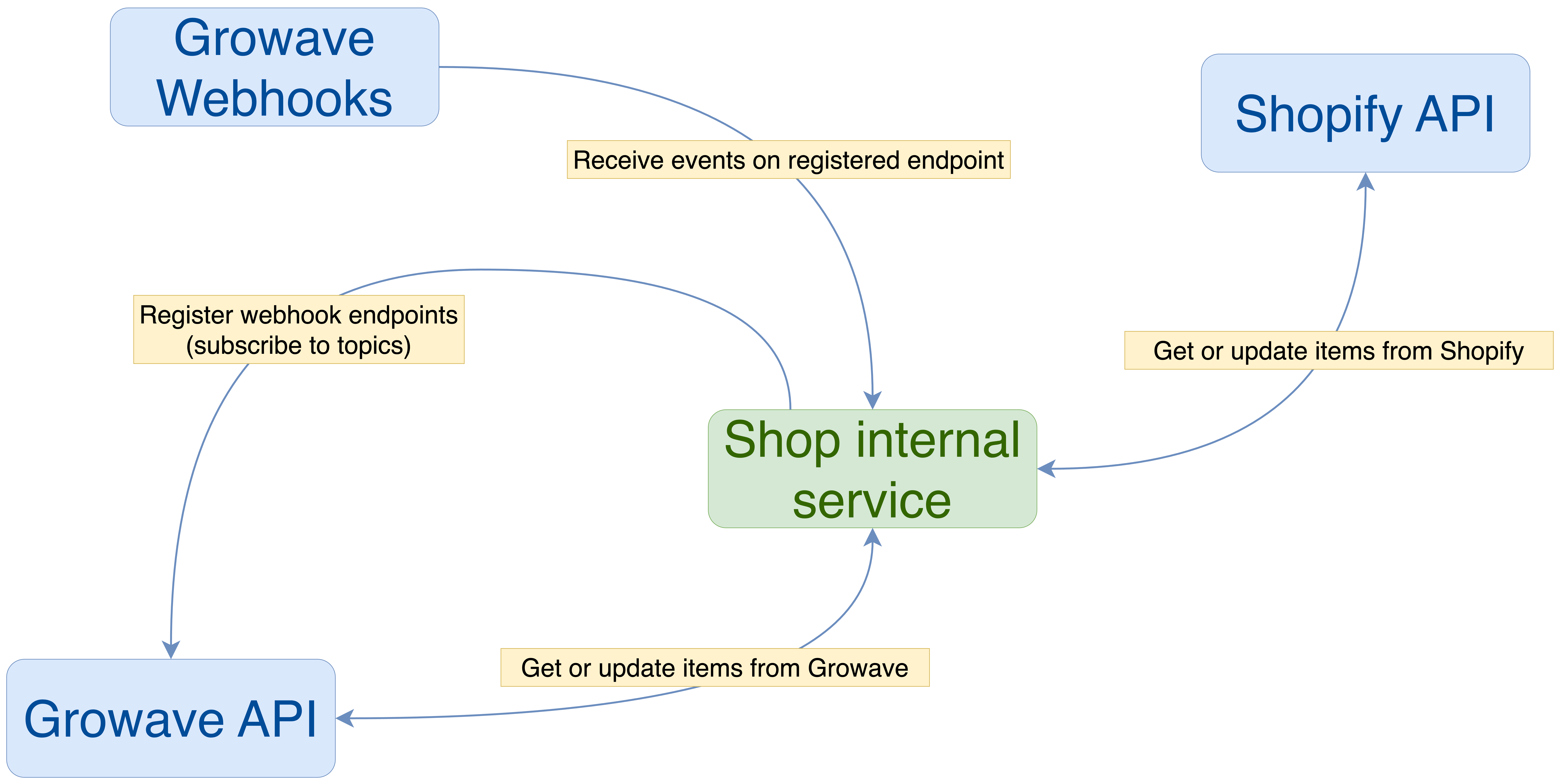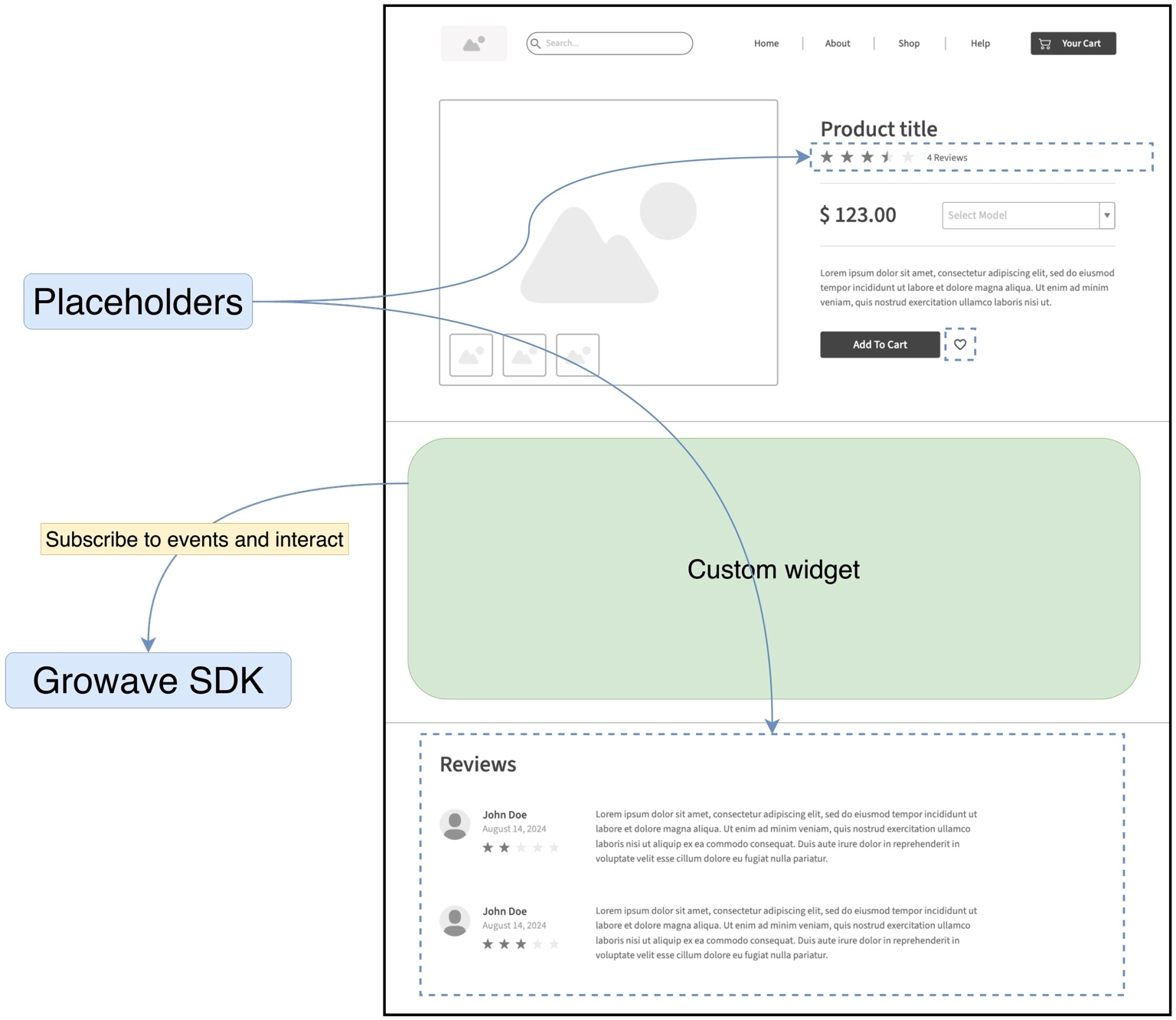Introduction
This documentation provides essential resources for integrating and extending Growave's capabilities within your Shopify store. It is divided into two main sections:
Server-side integration
Integration components
- Growave API: RESTful API for interacting with Growave services, such as retrieving and updating data.
- Growave webhooks: Real-time notifications sent to your server when specific events occur within Growave.
Schema

Description
-
Growave API: Allows your internal service to subscribe to topics and send requests to Growave for data retrieval or updates.
-
Growave webhooks: Delivers event notifications to your internal service, such as updates to customer profiles or loyalty points.
-
Shop internal service: Manages events from Growave Webhooks, interacts with the Growave private API, and communicates with the Shopify API as needed.
-
Shopify API: Used by your internal service for operations in Shopify, like updating products or syncing customer data.
Interaction flow:
- Register webhook endpoints in the Growave API (subscribe to topics).
- Growave Webhooks send event data to your shop’s internal service.
- The internal service processes events, interacts with Growave private API for additional information, and uses the Shopify API as needed.
Client-side integration
Integration components
- Growave SDK: JavaScript SDK for interacting with Growave widgets and data on the storefront.
- Placeholders: Designated areas on the storefront where Growave widgets can be integrated.
- Custom widgets: User-defined components that leverage Growave data through the SDK to create unique elements on the storefront.
Schema

Description
-
Growave SDK: Provides methods for subscribing to events and interacting with Growave data on the storefront.
-
Placeholders: Predefined areas where Growave widgets can be embedded for seamless integration.
-
Custom Widgets: Custom components that interact with Growave data to enhance the storefront’s functionality.
Interaction flow:
- Growave SDK is used to subscribe to events and interact with data.
- Widgets are placed into designated placeholders on the storefront.
- Custom widgets are created using the SDK to extend functionality or create new features.